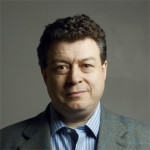[ READ The Language and Thought of the Child (Part 1) – Jean Piaget HERE ]
Different thinking, different worlds
Piaget borrowed a distinction from psychoanalysis about two types of thought:
- Directed or intelligent thought is that which has an aim, adapts that aim to reality, and can communicate it in language. This thinking is based on experience and logic.
- Undirected or autistic thought involves aims which are not conscious and not adapted to reality, based on satisfaction of desires rather than establishing truth. The language of this sort of thinking is images, myths and symbols.
For the directed mind, water has certain properties and obeys certain laws. It is conceived of conceptually as well as materially. To the autistic mind, water is only relevant in relation to desires or needs: it is something that can be drunk or seen or enjoyed
These distinctions helped Piaget appreciate the development of the child’s thought up to the age of 11. From 3-7 the child was largely egocentric and had elements of autistic thought, but from 7 to 11 egocentric logic made way for perceptual intelligence.
Piaget set up experiments in which children were asked to relate a story they had been told or to explain back something, such as the working of a tap, that had been shown to them. Before they were 7, children did not really care if the people they were relating to understood the story or the mechanism. They can describe, but not analyze. But from 7-8 onwards, children do not assume that another person will know what they mean and attempt to give a faithful account of something – to be objective. Until then, a child’s egocentrism does not allow them to be objective. What they can’t explain or don’t know they make up. But at 7-8 the child knows what it means to give a correct rendering of the truth – that is, the difference between invention and reality.
Piaget noticed that children think in terms of ‘schemas’, which allow them to focus on the whole of a message without having to make sense of every detail. When they hear something they do not understand, children do not try to analyze the sentence structure or words, but try to grasp or create an overall meaning. He noted that the trend in mental development is always from the syncretic to the analytical – to see the whole first, before gaining the ability to break things down into parts or categorize. Prior to ages 7 or 8, the child’s mind is largely syncretic, but later develops powers of analysis which mark the shift from the juvenile to the adult mind.
“Play is the answer to how anything new comes about.”
Child logic
Piaget wondered: Why do children, particularly those under 7, fantasize and dream and use their imagination so much?
He observed that because they do not engage in deductive or analytical thought, there is no reason to make a firm demarcation between ‘the real’ and ‘the not real’. As their minds do not work in terms of causality and evidence, everything seems possible.
When a child asks, ‘What would happen if I were an angel?’, to an adult the question is not worth pursuing because we know it can’t be real. But for a child, anything is not only possible, it is explainable, since no objective logic is required. To satisfy their mind, all that is required is a motivation e.g. The ball wanted to roll down the hill, so it did. At age 6, a boy might feel that a river flows down a hill because it wants to. A year later, he will explain it in terms of ‘water always flows downhill, so that is why the river is flowing down this hill here’.
‘The world of make believe’ as we so superiorly tag it, has to the younger child a feel of cold, hard reality, because within it everything makes sense according to its own intentions and motivations. In fact, as Piaget wryly observes, the child’s world seems to work so well that, according to its own understanding, logic is not required to support it.
Why do many young children incessantly ask ‘Why?’ Because they want to know the intention of everyone and everything, even if it is inanimate, not realizing that only some things have intentions. Later, when the child can appreciate that most things are caused rather than intended, her questions become about causality. The time of a child’s life before she understands cause and effect – precausality – coincides with the time of egocentrism.
Adults often find it difficult to understand children because they have forgotten that the child exists in a completely different mind in which logic plays no role. You cannot make a child think in the same way as you before they are certain age. At each age, a child gains a certain equilibrium in relation to their environment. That is, the way they think and perceive at age 5 perfectly explains their world. But that way does not do when they are 8. Just as humans grow physically and adjust to their environment according to their bodies, so they adjust intellectually. As Piaget puts it, “need creates consciousness”.
In later writings, Piaget explored the final stage of mental development, beginning at age 11 or 12. The teenager’s ability to reason, think abstractly, make judgments and consider future possibilities made them essentially the same as an adult. From this point on it was a matter of increases in ability rather qualitative changes.
Final comments
Despite some questions about the precise timings, Piaget’s stages of child development have largely stood the test of time, and his impact on pre-school and school education has been great.
Yet Piaget never considered himself a child psychologist, and was more accurately a scientist focused on theories of knowledge. His observation of children led to broader theories on communication and cognition, because what he learned about the child’s mind threw the adult’s into clearer view. For instance, it was not only children who used schemas to make sense of the world – we adults also have to accommodate and assimilate new information by conforming it to what we know already.
Piaget invented the field of ‘genetic epistemology’, which means how theories of knowledge evolve or change in relation to new information. Given that the construction of knowledge is such a human, psychological endeavor, it made it all the more important to be rigorously objective about the admission of new facts. For Piaget, a person’s mind is a relatively arbitrary creation, formed in such a way that reality could be explained according to that person’s own model of the world. In education, he believed, you had to take account of these models rather than simply shoving facts down a person’s throat, otherwise information would not be assimilated. Such a method of education resulted in dull conformists who were uncomfortable with change, and Piaget was ahead of his time in suggesting that we should educate people to be innovative and inventive thinkers who were both aware of the subjectivity of their own minds, yet mature enough to accommodate new facts. His initial experiments observing the language and thought of the child, therefore, led to great insights into how as adults we process knowledge and create new understanding. [From: Butler-bowdon.com]
“Each time one prematurely teaches a child something he could have discovered himself, that child is kept from inventing it and consequently from understanding it completely.”
The adult, even in his most personal and private occupation, even when he is engaged on an enquiry which is incomprehensible to his fellow-beings, thinks socially, has continually in his mind’s eye his collaborators or opponents, actual or eventual, at any rate members of his own profession to whom sooner or later he will announce the result of his labours. This mental picture pursues him throughout his task. The task itself henceforth socialized at almost every stage of its development. Invention eludes this process, but the need for checking and demonstrating calls into being an inner speech addressed throughout to a hypothetical opponent, whom the imagination often pictures as one of flesh and blood. When, therefore, the adult is brought face to face with his fellow-beings, what he announces to them is something already socially elaborated and therefore roughly adapted to his audience, i.e., it is comprehensible. Indeed, the further a man has advanced in his own line of thought, the better able is he to see things from the point of view of others and to make himself understood by them.
The child, on the other hand, placed in the conditions which we have described, seems to talk far more than the adult. Almost everything he does is to the tune of remarks such as “I’m drawing a hat,” “I’m doing it better than you,” etc. Child thought, therefore, seems more social, less capable of sustained and solitary research. This is so only in appearance. The child has less verbal continence simply because he does not know what it is to keep a thing to himself. Although he talks almost incessantly to his neighbours, he rarely places himself at their point of view. He speaks to them for the most part as if he were alone, and as if hi were thinking aloud. He speaks, therefore, in a language which disregards the precise shade of meaning in things and ignores the particular angle from which they are viewed, and which above all is always making assertions, even in argument, instead justfiying them. …
What is the reason for this? It is, in our opinion, twofold. It is due, in the first place, to the absence of any sustained social intercourse between the children of less than 7 or 8, and in the second place to the fact that the language used in the fundamental activity of the child—play — is one of gestures, movement and mimicry as much as of words. There is, as we have said, no real social life between children of less than 7 or 8 years.
If language in the child of about 6 1/2 is still so far from being socialized, and if the part played in it by the ego-centric forms is so considerable in comparison to information and dialogue, etc., the reason for this lies in the fact that childish language includes two distinct varieties, one made up of gestures, movements, mimicry etc., which accompany or even completely supplant the use of words, and the other consisting solely of the spoken word. Now, gesture cannot express everything. Intellectual processes, therefore, will remain ego-centric whereas commands etc., all the language that is bound up with action, with handicraft, and especially with play, will tend to become more socialized. …
Ego-centric thought and intelligence therefore represent two different forms of reasoning, and we may even say, without paradox, two different logics. By logic is meant here the sum of the habits which the mind adopts in the general conduct of its operations – in the general conduct of a game of chess, in contrast, as Poincare says, to the special rules which govern each separate proposition, each particular move in the game. Ego-centric logic and communicable logic will therefore differ less in their conclusions (except with the child where ego-centric logic often functions) than in the way they work. [From: Newlearningonline.com]
About the Author:
Jean Piaget (1896–1980) was a Swiss Psychologist, Biologist and Scientist well known for his work studying children.
Over the course of his six-decade career in child psychology, Piaget identified four stages of mental development, called Schema. The first is the “sensorimotor stage,” which involves learning through motor actions, and takes place when children are 0–2 years old. During the “preoperation stage,” children aged 3–7 develop intelligence by using their natural intuition. During the “concrete operational stage,” children 8–11 develop cognitively through the use of logic that is based on concrete evidence. “Formal operations,” the fourth and final stage, involves 12-to-15-year-olds forming the ability to think abstractly. Piaget called his collective theories on child development “Piaget’s Genetic Epistemology.”
In 1955, he created the International Centre for Genetic Epistemology in Geneva and directed it until 1980. According to Ernst von Glasersfeld, Jean Piaget is “the great pioneer of the constructivist theory of knowing.”
He also developed new fields of scientific study, including cognitive theory and developmental psychology. Piaget received the Erasmus Prize in 1972 and the Balzan Prize in 1978.
[From: Biography.com and Goodreads.com]
If you like this story, CLICK HERE to join the tribe of success-minded people just like you. You will love our weekly quick summaries of top stories, talks, books, movies, music and more with handy downloadable guides, cheat sheets, cliffs notes and quote books.
And, you can opt-out at any time – no strings, promise… CLICK HERE
















